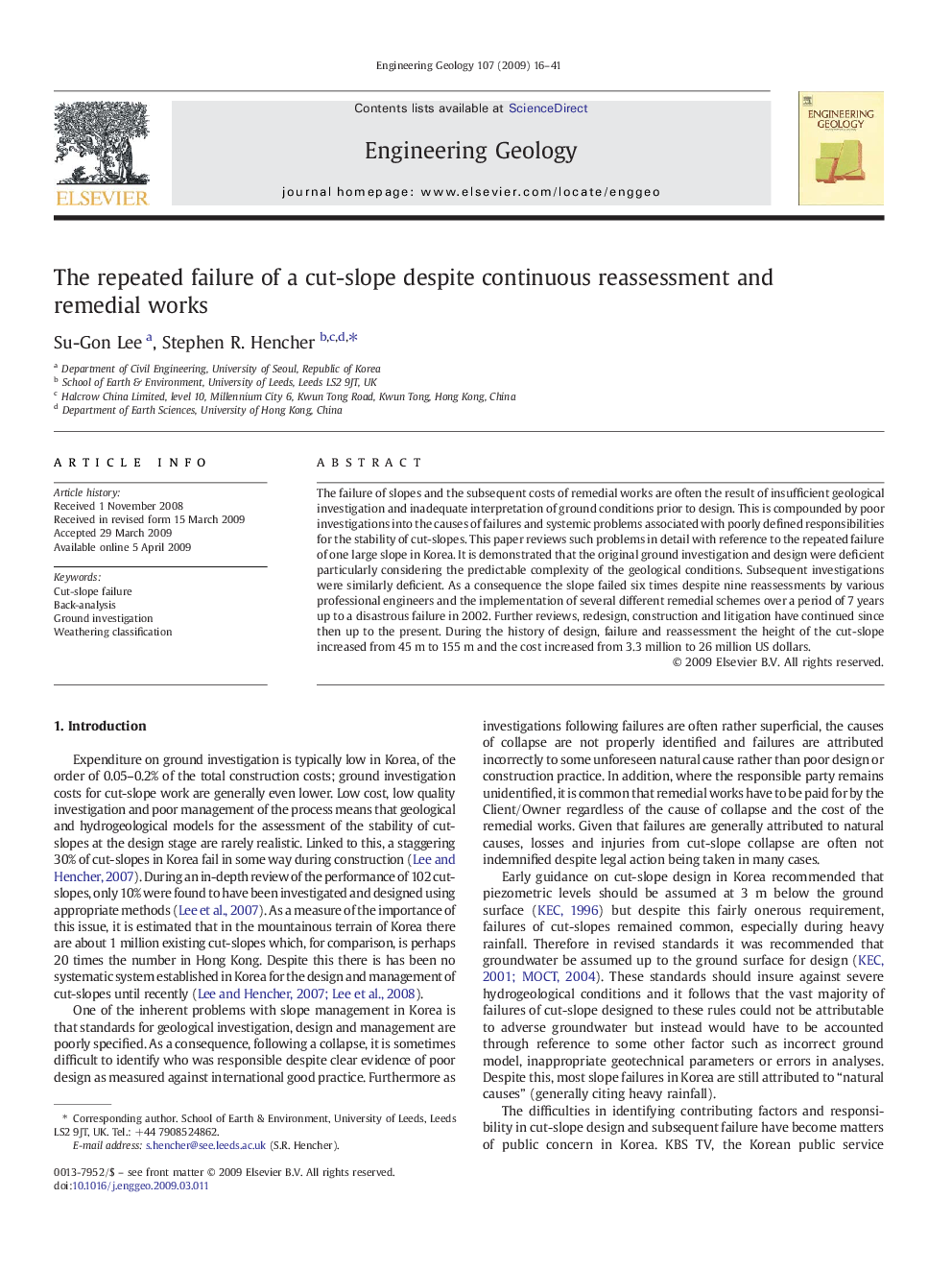| Article ID | Journal | Published Year | Pages | File Type |
|---|---|---|---|---|
| 4744622 | Engineering Geology | 2009 | 26 Pages |
The failure of slopes and the subsequent costs of remedial works are often the result of insufficient geological investigation and inadequate interpretation of ground conditions prior to design. This is compounded by poor investigations into the causes of failures and systemic problems associated with poorly defined responsibilities for the stability of cut-slopes. This paper reviews such problems in detail with reference to the repeated failure of one large slope in Korea. It is demonstrated that the original ground investigation and design were deficient particularly considering the predictable complexity of the geological conditions. Subsequent investigations were similarly deficient. As a consequence the slope failed six times despite nine reassessments by various professional engineers and the implementation of several different remedial schemes over a period of 7 years up to a disastrous failure in 2002. Further reviews, redesign, construction and litigation have continued since then up to the present. During the history of design, failure and reassessment the height of the cut-slope increased from 45 m to 155 m and the cost increased from 3.3 million to 26 million US dollars.
